Oregon & Oregon Trail Interpretive
Center
June 16, 2007.
We are staying at Mountain View Travel Park in Baker City. $24.79
FHU, shade and a nice enough RV-Park. It must be a former KOA -- Keep
On Adding since they charge extra for everything, $2 extra for wifi,
$2 extra for larger sites, you get the picture KOA (Keep On Adding)..
National Historic Oregon Trail Interpretive Center
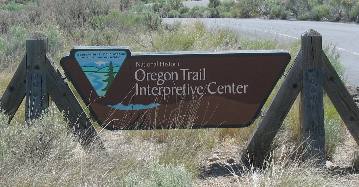
National Historic Oregon Trail Interpretive
Center Baker City, Oregon
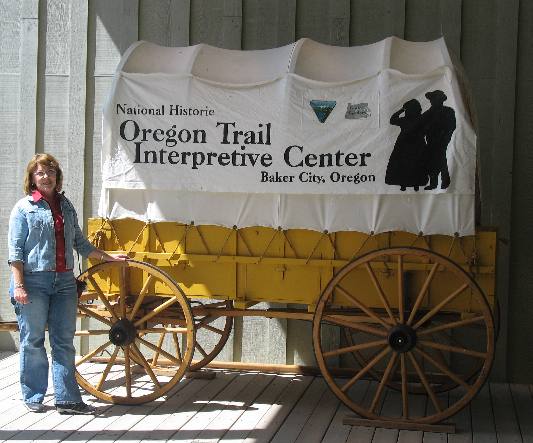
One of the big tourist attractions in Baker
City is the National Historic Oregon Trail Interpretive Center.
This is a world class Interpretive Center really explaining the whole
phenomena of the great movement of people from the eastern United
States to western Oregon.
Needless to say Joyce
and I spent several hours absorbing all the information presented.
Mike
at National Historic Oregon Trail Interpretive Center
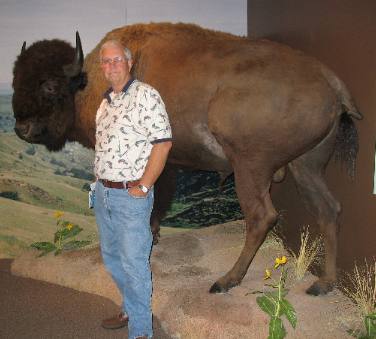
I wonder which one of us looks best, me or the buffalo? VBG
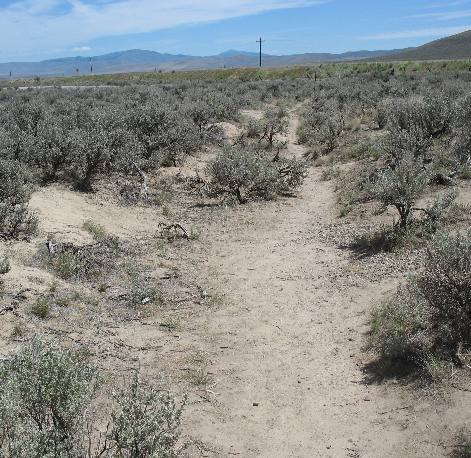
Beginning in 1843, thousands of Oregon Trail emigrants trekked through
this region toward new lives in the West. This epic journey indelibly
etched the landscape with wagon ruts such as these.
Of the 2170 miles of the Oregon Trail, approximately 300 miles of
ruts remain. Swales created by thousands of wagon wheels and the trampling
of draft animals are deep in some areas, shallow in other places.
Much of the trail has disappeared due to natural erosion, and development
of farms, highways, cities and towns. In some places, the Oregon Trail,
or Emigrant Road as it was generally called in the 1800's, was later
used by automobiles.
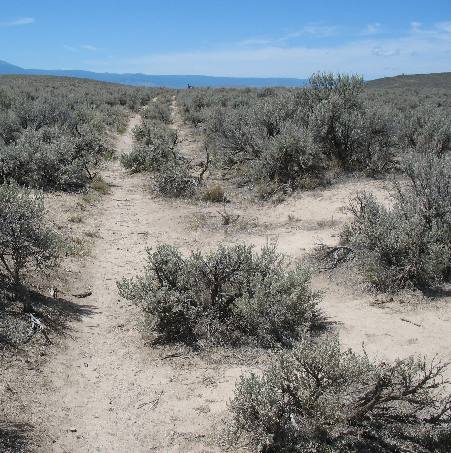
As you might suspect, the Oregon Trail route followed the easiest
grades whenever possible. These ruts came from the southeast across
Virtue Flat as it headed northwest towards Baker
Valley and the divide in the low hills to the north. In any
place where level open ground permitted wagons spread out rather than
follow single file to give livestock more access to grazing and to
minimize the dust. In places like this they would follow one another
thus creating these ruts.
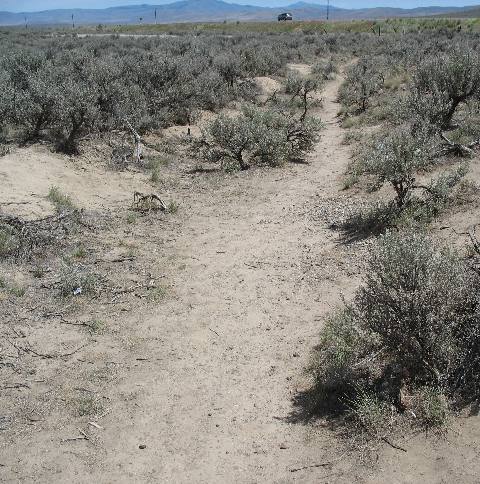
Emigrants generally traveled through this area sometime between mid-August
and late-September. At the time of the migration, this site was NOT
known as "Flagstaff Hill', but was referred to as a high ridge
or divide in pioneer diaries that read something like this: "...after
leaving camp. We crossed the divide and camped at the
lone pine tree..." James W. Nesmith, 25 September 1843
To begin with emigrants on the Oregon Trail came west searching for
good farmland. Later, gold was one of the greatest lures for people
to move west.
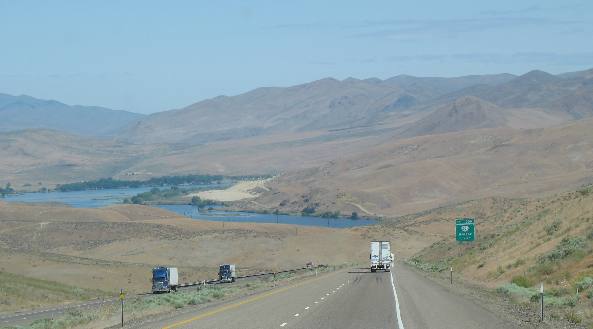
While this is NOT part of the Oregon Trail Interpretive Center it
is an important part of the emigrant trail history so I included it.
This is Farewell Bend
State Park in Oregon. It was given the name because it is
where emigrants on the Oregon Trail left the Snake River that they
had been following for over 300-miles. Emigrants had grown fond of
the Snake River. At Farewell Bend emigrants were compelled to walk
or die since certain death lay ahead in any descent of Hells
Canyon which lay ahead for those that contemplated following
the Snake River.
Their good-bye to the Snake was heart felt.
The Burnt River canyon was equally unforgiving. Purposeful burning
of the hillsides by Indians helped ensure fine grass for livestock,
but the path twisted around the river, and heavy brush slowed progress.
For four or five days, emigrants wandered back and forth across the
riverbed, braved the slopes, and struggled with overturned wagons.
Their reward? Virtue Flat --- and more sagebrush!
Mike & Joyce Hendrix

Mike
& Joyce Hendrix who we are
We hope you liked this page. If you do you might be interested in
some of our other Travel Adventures:
Mike & Joyce Hendrix's home
page
Travel Adventures
by Year ** Travel
Adventures by State ** Plants
** Marine-Boats
** Geology ** Exciting
Drives ** Cute Signs
** RV
Subjects ** Miscellaneous
Subjects
We would love to hear from you......just put "info" in
the place of "FAKE" in this address: FAKE@travellogs.us
Until next time remember how good life is.



